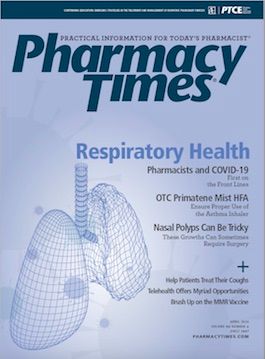Publication
Article
Pharmacy Times
Telehealth Offers Myriad Unique Opportunities for Pharmacists
Author(s):
Technology advances pave the way to engage caregivers, health care providers, and patients.
Telehealth involves the use of electronic information and telecommunications to promote or support long-distance clinical health care, education, and public health.1 This may include remote patient monitoring, store-and-forward imaging (collecting clinical information and sending to another site for evaluation), telephone communication, and video conferencing (figure).1 Pharmacists can establish medication therapy management (MTM) telepharmacy services by engaging caregivers, health care providers, and patients. The Centers for Medicare & Medicaid Services began reimbursing for telehealth services in 2019, and Medicare Advantage Plans are offering more benefits in 2020.2

INCORPORATING SERVICES
Telehealth services can be especially important in rural areas and for patients who cannot have face-toface consultations at the pharmacy because of their health conditions. Keep in mind that pharmacists are required to comply with the rules and regulations of the state in which the patient is located and may need to hold a pharmacy license in that particular state.1 Pharmacists can engage caregivers and patients by explaining the MTM services and speaking clearly and slowly. Creating a checklist can help ensure that the consult runs smoothly and that nothing is overlooked. Additionally, collaborating as part of an interdisciplinary team is critical for telehealth MTM services to facilitate communication with all health care providers.1 One study evaluated a 6-month outpatient interprofessional telehealth chronic care management pilot program and found that integrating a telepharmacist enhanced clinical services.3
TAKING A CLOSER LOOK
In an interview, Ahzam Afzal, PharmD, founder and managing partner of chronic care management company Frontizo in Bingham Farms, Michigan, discussed how the company offers MTM services through its comprehensive care management, remote patient monitoring, and telehealth programs. Frontizo provides services to patients nationally across accountable care organizations, hospitals, independent physician associations, and physician practices.
“We are identifying symptoms early on by touching base with each patient monthly or multiple times per month if warranted and looking for any signs or symptoms of exacerbation. In addition, our patients are connected to our remote patient monitoring sensors, which allow us to provide continuous and episodic monitoring of the patient through our proprietary technology and telehealth platforms and 24/7 multidisciplinary clinical team,” Afzal said. The team can reach out to patients in real time when readings deviate from patient-specific parameters, and MTM pharmacists can address medication-related problems immediately.
Afzal discussed a recent case of a low blood pressure reading in the middle of the night from a patient with hypertension. The 24/7 clinical team reached out to the patient via a virtual visit and inquired about any recent changes in medications. The team discovered that 2 weeks prior, the patient had visited a cardiologist, who had prescribed a β-blocker. After conducting a thorough assessment of the patient’s active medications, the MTM team discovered that the individual was taking 2 β-blockers concurrently. Unaware of the duplication of therapy, the patient was continuing to take a β-blocker that their primary care physician had initially prescribed. The clinical team was able to connect with both providers and help ensure an appropriate intervention, preventing a potentially harmful outcome.
“These are the types of interventions that would only be identified with the integration of MTM and telehealth,” Afzal said.
“In addition to the episodic, alert-based outreach, our team of pharmacists are connecting with the patient’s pharmacies, third-party payers, as well as their other providers to identify issues relating to medication adherence, safety, access, and therapy/dose effectiveness to ensure these gaps are identified and addressed immediately,” Afzal added.
Integrating telehealth into MTM services allows pharmacists to recognize gaps in adherence, which are primarily the result of lack of access to medication, high-cost prescriptions, low health literacy, and transportation issues.
“By providing social worker— and pharmacist-directed services as an integral segue through our MTM program, we are able to ensure that the barriers to adherence are addressed efficiently and in real time,” Afzal said.
The care team at Frontizo helps ensure that all medication adherence components are up-to-date and part of an evolving care plan that is shared with not only the patient’s primary care physician but also the entire health care team, to promote positive therapy outcomes.
“[Results of] our studies have shown that patients with engaged caregivers involved in their care are far more likely to adhere to their treatment plans and achieve far better outcomes,” Afzal concluded.
Jennifer Gershman, PharmD, CPh, is a drug information pharmacist and Pharmacy Times® contributor who resides in South Florida.
REFERENCES
- Telehealth. American Pharmacists Association website. pharmacist.com/telehealth. Accessed February 6, 2020.
- Centers for Medicare & Medicaid Services. Telehealth. Medicare.gov website. medicare.gov/coverage/telehealth. Accessed February 7, 2020.
- Taylor AM, Bingham J, Schussel K, et al. Integrating innovative telehealth solutions into an interprofessional team-delivered chronic care management pilot program. J Manag Care Spec Pharm. 2018;24(8):813-818. doi: 10.18553/jmcp.2018.24.8.813.







